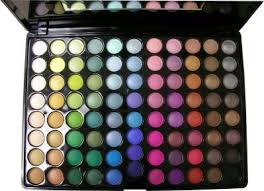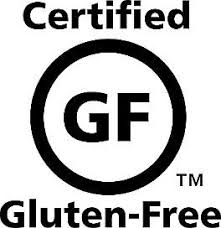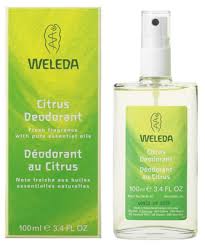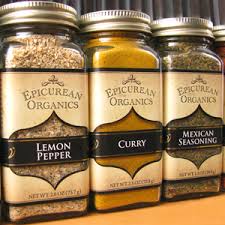
Herb Oil
Fresh Start for a New Year? Let's Begin in the Kitchen(Excerpt)
The reality is that few of us provision our kitchens or cook exclusively with ultra-fresh ingredients, especially in winter, when there simply are no ultra-fresh ingredients.
If your goal is to cook and cook quickly, to get a satisfying and enjoyable variety of real food on the table as often as possible, a WELL-STOCKED PANTRY AND FRIDGE can sustain you. Replenished weekly or even less frequently, with an occasional stop for fresh vegetables, meat, fish and dairy, they are the core supply houses for the home cook.
Here is my little list of items you might spurn, along with some essential pantry and long-keeping refrigerator items you might consider. Note that I’m not including the ultra-obvious, things that are more or less ubiquitous in the contemporary American pantry, like potatoes, eggs and honey.
OUT - Packaged bread crumbs or croutons.
IN - Toast/fry your own.
OUT - Bouillon cubes or powder, or canned stock.
IN - Make your own stock in 10-30 minutes.
OUT - Aerosol oil (it's expensive and has additives).
IN - Get some good olive oil and a hand-pumped sprayer or even simpler, a brush. Simplest: your fingers.
OUT - Bottled salad dressing and marinades. The biggest rip-offs imaginable.
IN - Make your own (see article for basic recipe).
OUT - Bottled lemon juice.
IN - Lemons.
OUT - Spices older than a year.
IN - Fresh spices, including cardamom, fennel seeds, cumin etc.
OUT - Dried parsley and basil.
IN - Fresh parsley and dried tarragon, rosemary and dill.
OUT - Canned beans (except in emergencies).
IN - Dried beans.
OUT - Imitation vanilla.
IN - Vanilla beans.
OUT - Grated imitation “Parmesan”.
IN - Real Parmigiano-Reggiano.
OUT - Canned peas (and most other canned vegetables).
IN - Frozen peas. In fact, many frozen vegetables are better than you might think.
OUT - Tomato paste in a can.
IN - Tomato paste in a tube. You rarely need more than two tablespoons so you feel guilty opening a can; this solves that problem.
OUT - Premade pie crusts. O.K., these are a real convenience, but almost all use inferior fats.
IN - Crumble graham crackers with melted butter and press into a pan.
OUT - Cheap balsamic or flavored vinegars.
IN - Sherry vinegar.
OUT - Minute Rice or boil-in-a-bag grains.
IN - Genuine grains.
OUT - “Pancake” syrup, which is more akin to Coke than to the real thing.
IN - Real maple syrup.
YOU SHOULD ALSO STOCK:
Real bacon or prosciutto
Fish sauce
Canned coconut milk
Miso paste
Capers, olives and anchovies
Walnuts
Pignoli
Dried fruit
Dried mushrooms
Frozen shrimp
Winter squash and sweet potatoes
COMMENTS
*The relationship between fresh, ocean-caught SHRIMP and the frozen (from god knows where or what "farm" and frozen for how long) variety is as the relationship between a pot of lovingly cooked Community Dark Roast and a cup of microwaved Folger's instant.
*Juicing a LEMON - instead of a clunky reamer or juicer, or breaking a fingernail using your bare hands, er, use a fork. Hold lemon in one hand, stick fork into lemon flesh with other hand, twist and wiggle fork in lemon a bit whilst squeezing, voila. Most helpful to get the last of juice and pulp out of the lemon half (as much is lost when squeezed only by hand).
*I WOULD ADD frozen spinach, pumpkin, molasses, horseradish, White Lily or King Arthur flour in all varieties, good yeast, and harissa to that list.
*Eat a freshly caught and cooked PRAWN on fresh white bread with butter and lemon and you'll never again consider those tiny frozen things as edible.
*I would disagree about the TOMATO PASTE because I find the canned products generally better tasting and the product in a tube to get flat and dull after some fridge storage. We dollop leftover tomato paste in pieces into a plastic bag and freeze the bunch. Works great.
*I did get a laugh when I read the bit about keeping a quarter pound of PROSCIUTTO around. Anyone who can do that, perhaps shouldn't spend the money on it.
*I use a bit of chopped DRIED APRICOT in lots of winter dishes, including stuffing.
*BLACK BEANS from a can are not bad.
*Well, if I had your salary/grocery budget I might follow your suggestions more seriously. I have a couple of suggestions:
Grate fresh GINGER and roll in plastic wrap like a log and freeze. Cut off slices as needed.//Continue buying canned TOMATO PASTE. Tubed paste is a rip-off. Open both ends of can and squeeze onto plastic wrap and freeze. Cut off as needed.//YAMS spoil easily in the fridge. Bake them and freeze for future use.//CARROTS are good keepers and should be looked on as cakes, muffins, soups besides being sticks.//What if the power goes out in an ice storm and we live in an age where the neighborhood grocery store within walking distance is extinct? So much for those wicker baskets or canvas bags. Stock some canned goods.
*STOCK: I keep a large zip-lock bag in my freezer, in which I stash ends of asparagus spears, carrot peelings, tough broccoli stems, scallion bottoms, celery bottoms, even washed onion skins. When I roast a chicken, I throw its neck, gizzards, heart, and liver into a pot with my frozen stash of vegetable trash. Fill the pot with water, and let it simmer, covered, for a couple of hours. Strain it into a large bowl, chill it, and then freeze it in 2-cup containers. Perfect for making rice, soup, etc. (And the dog gets the chopped up chicken innards. Everyone wins!)
*A PRESSURE COOKER can make the task of weekly BEAN cooking a bit less time consuming.
*My pantry ALSO INCLUDES: good canned whole tomatoes, canned or jarred Italian tuna and, canned cannellini and garbanzo beans. Excellent in a pinch.
*Keep your FRESH HERBS fresher longer by putting them (root first) in a glass of water in the fridge (like me, you may or may not remember to change the water). Parsley and cilantro last for weeks this way! Also, for FRESH VEGGIES I buy the reuseable stay-fresh bags (perhaps they are called ever-fresh - I find them at LifeThyme on Sixth Ave) - you can keep produce from going soft in the fridge for a very long time. Great for folks who live alone or sometimes lazy cooks who eat out frequently.
*Here's some of the non-food things we KEEP OUT of the kitchen: very large bowls for mixing salads or serving buffets; pasta maker, rice cooker, roasting pans, ice buckets, large seasonal trays, angel food pans, ice cream maker, steamers, rotisserie, extra dishes, paper supplies - you get the idea. It doesn't hurt to walk to these items as needed so that your kitchen is less cluttered.
*Oh for the life, and budget of a food writer...
*Please please don't boil MISO! As I was taught in Japan, bring the water to a boil, cook any veggies you're putting in the miso (carrots, potatoes, etc) and get your tofu up to temp (if you're using it).
Then, turn off the heat and add your miso paste. And if you're wondering why it still doesn't taste like it does in the restaurant, it's because you need to start with a BONITO BROTH (put some flakes into your water at the beginning and skim them out before adding anything).
Bravo, though, for the list! I would add SEAWEED (wakame or the like -- it's very versatile), PICKLED UME (which is pretty much eternal, I've never seen it go bad), PANKO (I agree with #19, and you can't make tonkatsu or tempura without it!), CARAMEL SAUCE -- the kind that's just water and sugar, browned (mix this with fish sauce and simmer fish in it and WOW), and finally, FRESH HERBS -- grow your own basil and then tell me how useless dried basil is when you've dried it yourself. I think you'll find it to be very potent and delicious!
*I freeze BASIL at the end of the summer - it usually lasts through the winter.
*All straightforward and good ideas, but....
(1) Don't throw out those cans of TOMATO PASTE. After you take that tablespoon or two from a just-opened can, put the rest in a small freezer bag, flatten it and pop it in the freezer. It's easy to cut off or break off whatever you need and return it to cold storage.
(2) Even cheap industrialized BALSAMIC VINEGAR is greatly improved by boiling it down to about two-thirds or half its original volume. The syrupy result is much more mellow and might surprise you in any dish, especially deserts.
*I pick up different SALTS in any French market I find myself. I like the big chunky variety, and always mix one with a scattering of herbs in a jar to throw on fish, salads, soups, etc., -- otherwise, a wonderful organic Spanish OLIVE OIL is currently my favorite, and also keep at least two kinds of OLIVE PASTE in the fridge (delicious accent without the calories) AND: pine nuts, walnuts, slivered almonds, all kinds of nuts and dried fruit to toss into breads, yogurt, salads, etc.
*I agree with most of this except that FRESH VEGGIES are available many places in the winter, frozen items take a lot of energy to transport and store, and growing most HERBS at home is so easy, why buy them?
*We use empty olive oil bottles to make herb flavored and hot OILS. Just chop up herbs or chilis, fill the bottle with oil, shake up and let stand for a few weeks. Delicious!
*Re grains: steel cut OATS are for more than breakfast. dry toast, then cook in salted water (3-1 liquid to grain) or stock until tender -- a risotto-like texture. a blank slate to which any combination of herbs, vegetables, dried fruits and nuts can be added.
Storing BACON: roll each slice in a spiral, freeze, then store in a freezer bag.
Re fresh vs frozen SHRIMP: virtually all commercially available shrimp have been frozen at sea. Those sold fresh have been thawed. Properly thawed, frozen shrimp is great.
*I do keep cans of organic BLACK BEANS in my pantry. Drain them, rinse with cold water, add a little chicken stock (homemade if you have it) cumin,green onions, garlic,sea salt,fresh black pepper, cayenne, smoked paprika and cilantro-- while the rice is cooking and voila, a fast delicious meal for two.
Also, cans of Muir Glen fire ROASTED TOMATOES cannot be matched by any other canned tomato product.
I also keep the remainder of canned smoked CHIPOTLES in a freezer bag-so I can pop one out when needed.
Also PANKO is delicious on fish as a coating instead of breadcrumbs. Use the traditional flour,egg,and then panko instead of bread crumbs-- then brush olive oil on the baking sheet and dribble oil on the fish. Bake the fish in the oven or fry in olive oil on top of the stove.
*I would add CEREALS: oatmeal especially, but also wheateena and cream of wheat (original 10 min only--do not follow cooking directions, put cream of wheat and water in pot, cook, stirring occasionally, takes 3 minutes or so). I sweeten all cooked cereals with dried fruit cut up into it, never use honey or sugar.Avoid packaged cereals!!! Be sure to stock various dried fruits which can be eaten as snacks, used in cooking, and keep for a long time.
As for canned BEANS, get over them. Dried beans only, as the article says. Cook and freeze in appropriate amounts, then you will have no problem whipping up something quickly, no extra salt, and no toxins from cans.
*I keep fresh GINGER in a plastic bag in the freezer. It keeps indefinitely. Grate what you need without thawing.
*It's hard for me to believe that anyone thinks of fresh LEMONS as an inconvenience or a budget buster. They aren't any costlier than the bottled stuff that tastes awful. True, fresh lemons don't keep forever, but it's easy enough to just buy them as you need them. And really, they're not hard to find a use for, if there's ever any danger of one going to waste.
*"Fresh" BASIL in the off-season is easy. At summer's end I cut down all my basil, removed all the leaves, stuffed them fairly tightly into a jar and then poured in olive oil to fill the space. I keep it in the refrigerator. The basil is as green and fresh tasting as it was when I picked it. And really, how often do you use basil in a recipe without also using olive oil? I expect the excess olive oil will be very well infused with the taste of basil and good in its own right.
*1. That's not stock, that's broth. STOCK is made with roasted bones.
2. Dried TARRAGON tastes like lawn clippings, but I'm considering giving it another shot because of this article.
3. TOMATO PASTE in a tube leaks red oil all over the fridge if it gets a pinhole, and it frequently does. Freeze dollops of the canned stuff.
4. A pound of cooked BEANS is an awful lot for a single person household to consume before they start fermenting. I'll stick with cans for most purposes.
*I go online to shop for the wholesale VANILLA BEANS you mentioned, and one site (Amadeus Vanilla Beans) warned to never store your beans in the fridge or freezer. They dry out and are vulnerable to developing mold. Instead keep them in a container (not airtight) in a cool, dry, dark place.
*I wish that supermarkets would sell smaller quantities of fresh HERBS. Often, I don't buy fresh parsley or dill because the large quantity being offered is just too much to use.
*CINNAMON's very much store-able. Just by inserting the bark in transparent glass jars they become an attractive, must part of one's kitchen store.
And you could turn them into an almost instant, but authentic spice and herbs TEA that is a whit oriental and ayurvedic -- just by combining cardamom, fennel and cinnamon bark and bringing to a boil, you have a gentle, calming scent filling your kitchen with a zest for wellness.
*If you overbuy on LEMONS, just squeeze the juice into a ziploc bag and freeze it (ice cube trays can be used if you want measured amounts). It's still tastes way fresher and more lemony than the bottled stuff.
*You were dead on with most of your recommendations save for a few:
Out - SPICES older than a year: If they are ground yes out BUT if Whole Keep. Actually, save for cinnamon, ginger and mustard most spices are best whole.
PIE CRUST: Better if you use vodka and less water.
Dried MUSHROOMS, You gotta soak them to get the sand out.
*With frozen PEAS, I slowly cook diced pancetta and garlic cloves in a little oil, then throw in the peas and finish with a bit of stock, then add a bunch of chopped parsley. It's standard practice in Italy for 'piselli' and tastes great
*Maybe this is heresy, but rather than let PARMIGANO-REGGIANO go moldy (which takes a bit, but seriously compromises the flavor), I freeze half of the wedge.
*Boiling MISO kills its healthy bacteria.
*Easy way to keep fresh summer BASIL and PARSLEY: wash and zap lightly in cuisinart with small amount of olive oil. press into ice cube trays and top with olive oil to keep green color. transfer to plastic bag in freezer. you can mix the two as the parsley keeps the basil green.
*Mark said that fresh PARSLEY keeps at least a week. Here is how to keep it for a ridiculously long time (I've had fresh bunches stored for over three weeks this way): when you get the bunch home from the store, chop off about 3/4 an inch on the bottom. Fill a little cup (something glass or a bit heavier works best) with about an 1..5" of water. Put the parsley in the water. Now (this is the important, crucial part) take a cheap plastic bag (like the kind your parsley came in from the grocery store) and put that over the whole thing. I swear it will keep and keep and keep--but you need the bag or you end up with wilted parsley.
*We get great VANILLA BEANS here, and I make extract by putting 2 or 3 split beans into a tall, slim, clean, bottle (vinegar type) and fill with either rum or vodka, the vodka is a neutral flavor and the rum is a little richer and warmer. As the liquid runs out, you just add more of the alcohol. This can be repeated 2 or 3 times, and lasts well over a year.
*I would add SMOKED PAPRIKA to the must-have spice list -- I put it in everything!
*For those worried about affording these things, try a small HERB garden to start with. My family has a large operation, but I also have a few pots on the back porch for the essentials: basil, oregano, rosemary, thyme, thyme, thyme, mint, sage, etc. If you harvest once in the peak of warm summer weather and dry those herbs, and harvest once more in autumn, you will have plenty of good dried herbs that you do not have to buy and that taste very good throughout the winter.
*Nostalgic for the scent of real lemon and limes? Don't think you lose your ability to taste as you get older, it's more the food that is losing its mojo. Who can remember when bananas were real bananas?
*I don't understand why people have to be contentious when they don't agree. After all, Mark is a New York foodie, and has to maintain an appearance of sophistication, and appeal to a wider audience at the same time. Take what works for you and forget the rest.
*I LOVE the canned LeSueur PEAS and could never give these up. Most of my family members think I am nuts but I wonder if there is an underground cult of LeSueur Peas lovers. See here:
http://www.bostonphoenix.com...*I would add a jar of SALSA and something else that I have become very fond of cooking with recently...HONEY DIJON MUSTARD. It's great for marinades and just last night it was a flavoring for salmon patties. I use it in my cooking at least twice a week. couldn't live without it.
*Out: Instant Oatmeal
In: Steel Cut OATS.
One pound in bulk provides about a week of breakfast cereal, cost less than a dollar. For variety, add raisins, maple syrup, nuts, bananas.
*I don't find these suggestions at all elitist. As a few people have pointed out, cooking beans and making stock from scratch only seem labor- and time-intensive. You can do both in a SLOW COOKER while going about your business. Dried beans cost much less than canned; bone-in chicken costs much less than deboned and you get two uses from it (meat and stock). You don't have to cook an entire pound of beans at once. Start with smaller amounts and see how much you'll use.
I would also add DRY VERMOUTH to Bittman's list. A bottle of Gallo Dry Vermouth is less than $10 at Trader Joe's, and just a splash or two adds immeasurably to sautes, soups, and more.
As for dried SPICES, try buying them in smaller amounts more frequently. Ethnic markets are a great source for inexpensive bulk spices.
And, I'll add a plug for my favorite spice of all: Old Bay. You can often find it near the fish section of your grocery store. It adds a smoky depth to just about anything, including dips, soups (and cooked beans!).
*Instead of throwing all spices and herbs away on new years, try DATING them with a permanent magic marker and throwing away only the old ones.
*In addition to tossing out "pancake syrup" -- toss out pancake mix! Mark's recipe in the first edition of HOW TO COOK EVERYTHING takes 2 minutes to measure and mix and is exceptionally delicious!
*Why not make fresh TOMATO PASTE? I do this every summer when tomatoes are at their best. I freeze the paste in ziploc bags. No need to peel the tomatoes. Just cut in quarters, simmer until much of the fluid is gone and then puree in your cuisinart. I also dehydrate tomatoes. This way you have the best of summer all year.
*One product I would add to the must-have list: TAHINI.
*go to
www.atlanticspice.com for all spices, herbs, nuts, grains,coucous, rices, seeds and teas/coffees and botanicals and tubes of tomato paste, anchovy mentioned in this article. At $2.00 a spice jar - you can throw out your spices and herbs. If you are in Truro stop in their retail store.
*Great suggestion for the miso paste - I mix it with soy sauce, sake and a little bit of brown sugar and use it as a GLAZE for salmon filet - bake in the oven for 15 min or so depending on the thickness - and it is absolutely delicious. It is quick too.
*Graham crackers and butter as a viable PIE CRUST? Horrible. The taste of the crackers overwhelms the pie ingredients, and there is nothing fresh tasting about it. It takes no time to make a real crust. I have heard dozens of friends and relatives whine about their inability to make a crust - get over it. Do it a few times and you'll find that you can practically do it in your sleep. Some tips to make it easier: minimize handling of the dough with your hands; if it gets warm it will be much less tender. Roll it between sheets of waxed paper, with a bit of flour to keep it from sticking. If you have trouble making it large enough to fit your pie pan, increase the recipe by 50%. You'll have plenty, and won't be panicky about rolling it out perfectly.
*Here in LA, lemons are $1.49 each (a gallon of gasoline is $1.89); cardoman is $16.50 for a bottle; tube tomato paste is 6x the price of canned tomato paste.
Oh well for the hapless unemployed.
*Remember, buying in bulk is only a money saver if you use in bulk.
Some NUTS do better in the fridge or freezer, if you plan to have them around for any length of time.
When I make STOCK, I freeze it in 1-cup servings - enough to flavor rice, deglaze a pan, punch-up a quick soup.
When SUGAR PUMPKINS are available (those are the small ones) I like to bake them and freeze the pulp in 1-cup packages, too. The baking brings out flavor so much better than boiling and makes delicious pies, breads, and soups for months and months.
*I'd add:
Fresh GARLIC. Indispensable. Add to everything that doesn't include sugar.
Fresh MINT. (Dry what you don't use.) It's great with garlic/savory, and refreshing with sweets. Smells like spring, so nice in winter.
Organic RAISINS. For some reason, these big raisins taste 1,000 times better.
Fresh CRANBERRIES. What blueberries are to summer, cranberries are to winter. Homemade cranberry orange sauce (2 bags cranberries, water to cover, 1 orange juice/zest, 1/2-1 c. sugar, simmered/stirred occasionally til thick & glossy. Very tart.) Awesome with everything.
*1) your MISO paste idea is not bad, but be sure to tell readers to buy from Japanese markets (available online if you do not live near one) because the taste is immeasurably better than US 'heath food' store brands.
2) in general it is far less expensive to shop in ETHNIC MARKETS for spices and ingredients for indigenous dishes - also they always taste better
*As far as canned food, taste aside there are real health concerns with BPA's in the lining of cans. Not sure if anyone has posted this before (didn't read all the comments) but here is a link discussing the problem with canned food.
http://www.ewg.org/reports/bisphenola*If you've no time ("kids careening around the kitchen), then the frozen section of your market may be more in your interest. Pretentious? Gimme a break. There are much poorer countries such as India and Vietnam, along with more frugal ones (France, Italy), where it is by no means pretentious to use fresh ingredients (they also seem to find the time). In fact, being frugal has quickly become our new pretension, but it need not apply in this regard.
*Isn't buying curry powder much like buying bottle salad dressing? Why not make your own GARAM MASALA?
Most PIGNOLI on the market these days either lack flavor or are downright rancid. You can recognize the inferior quality by the discoloration of the germ. Good, fresh pine nuts should be translucent and yellowish all over.
*Use jarred baby food as an emergency PUREE - it's much better than canned pastes and purees in taste and quality.
*A few folks have commented that Bittman's suggestions are too impractical because too labor intensive. Americans need to re-think our relationship to time. Our addiction to supposed convenience (instant noodles: just add water) is bad for health and bad for our pocket books. My job requires a 50-60 hour time commitment a week, but my partner and I still cook meals from scratch (whole foods--none of that processed junk). How do we do it? We consider the time that we spend cooking for each other and friends time well spent. I know that this will offend some readers, but think about it: how much time do you waste every day watching t.v. or surfing stupid web sites? Cut that out, and there's a lot more time for delicious and healthy meals with family and friends. Thanks, Bittman!
*PROSCUITTO in the freezer?
Do you want to destroy it entirely? Even with how little liquid is in it and how thin cut it should be, it still will be destroyed in the freezing process.
*-Boxed MILKS:
I have health issues with straight milk, and generally replace it with almond milk. It's actually cheaper than regular milk, keeps longer once opened, and can sit on the shelf for a while, always ready in an emergency. Soy and rice milks I imagine fall in the same category of price and ease.
-ZA'ATAR:
This middle eastern spice blend makes nearly any savory Mediterranean dish better. I would be lost without it.
-CORIANDER:
Having accidentally wound up with literally pounds of the stuff, I have found many uses for it and now find it indispensable when making a savory dish that either falls into the Asian world (I love it with miso paste) or northern European spices like allspice, nutmeg, etc.
*Robert from Berkeley is right... curry powder is a big "no-no" - I say this as an Indian person. I've taught my friends to make their own GARAM MASALA and they're delighted with the results. It's very easy too. Google it and find a blend that you like (there are hundreds of options). Curry powder is wrong, wrong, wrong.
*Don't forget PARSNIPS and TURNIPS. They're often forgotten, but great roasted or in soups and stews.
*Great article, and timely.
For the record, in the time it took me to read over 200 comments on "The Rising Cost of Citrus," "My Love Affair with Beans in a Can," or "Elitism v. Convenience in the Kitchen," I could have planned a week's worth of meals, drafted a grocery list, checked my bank balance to make sure I could swing an extra lemon, tracked down and/or ordered hard-to-find ingredients on-line (if necessary) and buckled down and finished my work project so I could leave by 5:30 and hit the grocery store. If I hadn't taken the time to post, I probably could have whipped up something quick for dinner, too. We're not rich, nor do I have oodles of extra time, and I'm not cooking for four, but last night we had a nice homemade pizza, and tonight we're having the meatballs & sauce I pre-made over the weekend. Good times.
It's not that you don't have time. It's that you choose to spend your time differently.
Just don't spend it boiling miso.
*If you don't have one, add a Japanese Benriner MANDOLIN SLICER to your kitchen, they come in three sizes and are cheapest in Oriental food markets.
Most of my dried GRAINS and NUTS are immediately placed in tapered canning jars and frozen for freshness. The more natural food you eat, either you buy it fresh and often or buy it in bulk and freeze it. Natural products go rancid so much faster than food stripped of it's germ.
I have not settled on a brand, but canned CHIPOTLES and sauce vary greatly in flavor. Favorite current use is chopping and mixing with hummus. Saltine type crackers without salt are inexpensive and universal dippers. Put the salt in the dip. Most commercial dips are way too salty anyway and far inferior to homemade.
The price difference between good ingredients and great ingredients is not as much as you think. Regardless of convenience, home cooking is far superior to frozen and frozen is not bad sometimes.
Lastly, for the traditionalists that insist on cooking, this year add a KITCHEN COMPUTER with a $10 membrane over the keys. An old laptop is great. Install favorite recipe software, I like Living Cookbook which allows you to publish your own cookbooks as gifts. Save all of Mark's recipes and tips as well as comments from the critics or search the web. You want new? Try the new and reduced size net books for several hundred dollars. Buy a backup external drive. No need for refrigerator magnets. It is the best way to keep track of recipe modifications. Leave your recipes to all your relatives and friends as database files. I have begun to download recipes in their native .html and use the search capabilities of the operating system to look for key words.
*My two cents regarding PARSLEY: after using part of the fresh bunch, chop the rest and freeze it! It'll retain flavor for weeks longer.
*I bought a lot of LEMONS, LIMES, and clementines before Christmas because I like to use them as decorations. Simply placed in a glass bowl or arranged on the mantle, they're naturally pretty. But I didn't let any of them go bad after Christmas. I made marinades and salad dressings and sliced some to add to the Britta. But I also made PRESERVED LEMONS using Kosher salt and lemon juice. Google the recipe. The one I used only required 3 lemons plus the juice of three other lemons but I think I mixed in some lime juice actually. You combine the ingredients and place in dark cabinet for three weeks. When ready you use as needed, discarding the flesh and slicing the rind. Keeps for months in the fridge and is excellent in salads and Moroccan dishes. Such a simple way to preserve lemons you may have on hand in excess before they go moldy.
*I was thrilled to see that WALNUTS made Bittman's list! Most people are surprised how flavorful and luxurious a fresh walnut is, because they're used to the packaged walnuts that tend to go rancid on the grocery store shelf. Having good quality walnuts makes as much difference as the one Bittman pointed out between real vanilla bean/extract instead of imitation.
We always get our walnuts from a great farm in the Central Valley of CA, called Citrona Farms -- you can order the nuts from their website,
www.citrona.com -- it's a fantastic source for a great ingredient, and well-priced, and you've never seen such a beautiful walnut!
*I love fresh cilantro but never have it when I need it! I just made some CILANTRO PESTO and froze it in ice cube trays. You have the perfect cube of fresh-ness in a pinch! You can also do this with BASIL (and you don't need to use garlic if you are allergic to it) and probably PARSLEY - I'm going to try this next.
*To those who recommend putting herbs or garlic in olive oil and storing it, beware! It can grow botulism. I believe is safer if you FREEZE the mix.
*This SHRIMP-loving group should get on a plane and fly down to Cabo San Lucas...there is a restaurant on the water that serves fresh shrimp every way possible..they bring a huge bucket to the table, dig in! Nothing fancy, plastic tables and chairs.. I didn't eat shrimp for a long time after this!..
*I always have some fresh SPRING ONIONS in the kitchen: they will keep for weeks standing in a long, narrow, opaque flower vase with a little water, provided you shorten their roots and change the water once a week. They bring a fresh touch of green to any dish just before serving, they can be used as chives in omelets and are delicious in salads and sauces.
*Great article Mark! My tips: I cook PINTO BEANS once a week and place in small containers and freeze to reheat for refried bean burritos. Since tamales are so labor intensive, I make about 4-5 dozen extra (during the holidays) and freeze to cook later. Delicious!
I agree with several here that canned beans are not that bad. Our favorite is 1 can of black beans (rinsed), 1 can corn, chopped tomatoes, cilantro, avocado and spices makes for a quick, nutritious DIP served with corn chips.
The main point of the article of not wasting food should be taken seriously as we are blessed with an abudance of food/spices/knowledge in this country.
*I agree with many of your suggestions, but I was surprised that you would have us make our own stock (quite a time-consuming process) but then use store-bought ground cumin. CUMIN is one of the easiest spices to grind oneself, and it really makes a difference. I keep an old electric coffee grinder on hand for this purpose and can have freshly ground cumin ready to go in seconds for chili, curries and other spicy fare.
Also I don't like commercial SUN-DRIED TOMATOES -- they are usually too strong and too tough. I make my own by cutting small ripe tomatoes in half, putting them on a cookie sheet and sprinkling them with salt and herbs and putting them in the oven at 200 degrees for about 5 hours. Then I pack them in vinegar and oil and refrigerate them. They're still soft but the juices are concentrated for a delectable tomato flavor. Very good with goat cheese or fresh mozzarella for a taste of summer in winter.
*Out with boullion cubes and canned STOCK is correct, but items like Better than Bouillion will do well in a pinch.
You completely forgot GARLIC. We raise our own, but if you absolutely have to buy in a grocers, never buy the crap in the little packages. Find a good grocer that sells individual heads.
Lastly, get good KITCHEN TOOLS that last. Forget anything that walmart or any discount house sells. I have chef's knives that are 40 years old and going strong. Learn how to sharpen a knife. Can't tell you the number of houses where I am invited to cook and you can't cut soft butter with their knives.
*The problem with dried BEANS is that you don't know how long they have been on the grocery shelf. Sometimes I have bought beans that were too old -- and no amount of soaking would soften them. These days I buy canned beans, unless I can find dried beans with a date on the package.
*Agree with almost everything, except one thing. MISO paste can grow mold if left unattended for long periods. Ensuring your purchase comes in a container that can be resealed tightly is important or do as I do and opt to purchase in smaller amounts at the bulk food store.
 Health Canada Seeks Input on Adding Anti-Cancer Drug to Junk Food
Health Canada Seeks Input on Adding Anti-Cancer Drug to Junk Food






















































